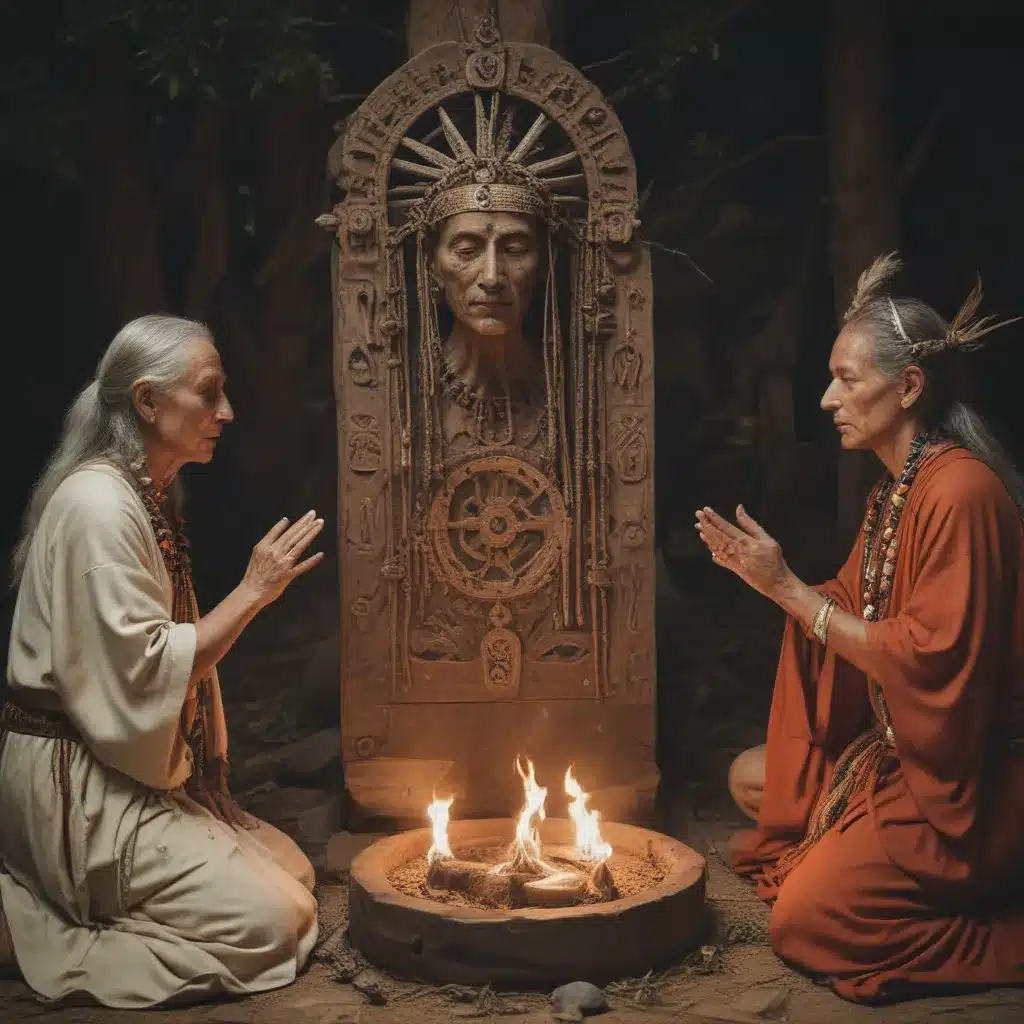
Unveiling the Enigmatic World of Korean Shamanism
As I step into the dimly lit kuttang, or shaman shrine, in the mountains surrounding Seoul, the air is thick with the scent of incense and the rhythmic beat of drums. I’m here to witness an ancient ritual, a captivating dance between the earthly and the divine, where shamans serve as the conduits for spirits and ancestors.
Shamans, known as mudang or mansin in Korea, are revered as intermediaries between the physical and spiritual realms. They possess the ability to channel the energy of the gods, ancestors, and unseen forces, using their own bodies as the canvas for these mystical manifestations. Through trance-like states, elaborate costumes, and intricate rituals, they bear witness to the encounters with the spirit world, captivating those who seek their guidance.
Adapting to the Modern World
As I observe the shaman Yongsus Mother and her apprentice Babe Okkyongs Mother prepare for the kut, or shamanic ritual, I’m struck by the way they have seamlessly integrated these ancient practices into the realities of modern life. Gone are the days of crowded village houses and rural backdrops; the kut now takes place in the kuttang, a secluded mountain shrine that removes the noise and spectacle from common view.
As the anthropologist Laurel Kendall describes, the shamans have adapted their rituals to the changing circumstances of urban Korea. Private cars or vans now ferry the shamans, their clients, costumes, and food offerings to the distant kuttang, where the gods and ancestors are feted until late afternoon, before everyone returns home on industrial time.
The spectacle may have been removed from common view, but the shamans’ ability to captivate their clients remains undiminished. As I witness the unfolding of the kut, I’m struck by the skill and resourcefulness with which Yongsus Mother and Okkyongs Mother weave their enchantment, seamlessly bridging the ancient and the modern.
Summoning the Spirits
The kut begins with Yongsus Mother’s soulful song, driving away any lingering pollution and inviting the gods to the ritual. Babe, the apprentice, then dons the traditional robes and crescent-sleeved jackets of the mansin, preparing to channel the spirits.
As the Mountain God, Babe describes the family’s anxiety over their dwindling wealth, tracing it back to a powerful ancestral grandmother who once prayed on the mountains. The gods’ lament that the family had neglected to honor their household deities with regular kut rituals resonates with the client, Mrs. Yi, a young woman from Ansan City who has come to the shrine in a desperate bid to restore balance to her life.
Connecting with Ancestors
The ritual continues with Okkyongs Mother, another experienced shaman, manifesting the ancestral spirits. Mrs. Yi’s own father, who had taken his own life due to financial hardship, appears weeping, articulating the tragedies that have befallen the family. Other ancestors, from distant generations to a beloved sister-in-law, offer their commiseration and blessings, slowly drawing Mrs. Yi into the mythic world the shamans are constructing.
Shamans are seen as intermediaries between this world and the spirit world, acting on behalf of the community to ensure balance and harmony. As the ancestors speak through Okkyongs Mother, Mrs. Yi is finally able to weep openly, her grief and anguish finding release in the ritual.
Embracing the Divine Comedy
The ritual reaches a crescendo as Yongsus Mother takes on the personas of the military gods, swaggering and harrumphing with a parody of masculine imperiousness. Her comic manifestation of the Official, complete with a pig-like snout and a contemptuous leer, elicits peals of laughter from the once-bashful Mrs. Yi, who has now fully embraced the drama unfolding before her.
The shamans’ ability to seamlessly transition between solemn invocations and boisterous comedic performances is a testament to their skill. They navigate the delicate balance of guiding their client through the emotional weight of her hardships while also providing moments of levity and release.
Finding Hope in Tradition
As the ritual draws to a close, the shamans ensure that Mrs. Yi is equipped with the knowledge and tools to continue honoring her ancestral spirits at home. Babe instructs her to place offerings for the Seven Stars, the deity that her family had neglected, and to pour libations for the twelve Officials, all in the hope of restoring the family’s fortunes.
Much like the author who found solace in shamanic practices after his own personal trials, Mrs. Yi emerges from the kut with a renewed sense of hope and connection to her family’s spiritual heritage. The ritual has not only addressed her immediate crisis but has also provided her with a framework to navigate the uncertainties of modern life.
The Enduring Power of Shamanism
As I leave the kuttang, I am struck by the enduring power of Korean shamanism. Despite the rapid urbanization and industrialization that South Korea has undergone, the ancient belief in the ability of shamans to bridge the gap between the physical and spiritual realms continues to captivate and comfort the country’s people.
From the bustling streets of Seoul to the quieter corners of the countryside, the mansin and their rituals persist, adapting to the changing times but never losing their essential connection to the timeless wisdom of the spirit world. It is a testament to the resilience of human culture and the universal need to find meaning and solace in the face of life’s challenges.
As I reflect on the profound experience I’ve witnessed, I can’t help but feel a deep sense of gratitude for the opportunity to glimpse into this extraordinary world. The kut has reminded me of the wonders that lie beyond the boundaries of our everyday existence, and the power of tradition to guide us through even the darkest of times.

